The scheme, developed in collaboration with heritage architect Purcell, will introduce new visitor facilities, including a café, rooftop terrace, and accessible walkways
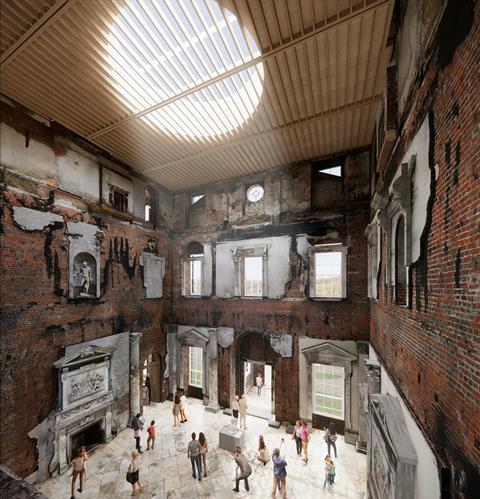
Guildford Borough Council has unanimously approved Allies and Morrison’s proposals for Clandon Park, the Grade I-listed Palladian house severely damaged by fire in 2015. Developed in collaboration with heritage architect Purcell, the scheme aims to stabilise the structure while introducing new interventions to improve public access and reinterpret the site’s history.
Designed by Venetian architect Giacomo Leoni, Clandon Park was considered one of Britain’s most significant Palladian houses before the fire destroyed its roof and much of its finely decorated interior. The new plans, developed in response to a National Trust design competition, do not seek to reconstruct what was lost but instead retain the remains of the historic building, creating an experience that reveals its architectural evolution.
The approved proposals include restoring the exterior to its pre-fire appearance, reinstating windows and doors, and securing the building with a new weather-tight roof. Inside, much of the fire-damaged structure will be conserved in its altered state, with walkways inserted into the voids where floors once stood, offering new perspectives on the building’s history.
A new accessible lift, reinstated staircases, and a rooftop terrace – accessed via partially glazed pavilions – will provide visitors with new ways to experience the house and its relationship to the surrounding Capability Brown-designed landscape.
The scheme also includes alterations to the basement to introduce visitor facilities, including a café, toilets, and back-of-house spaces. Historic collections salvaged from the fire will also be redisplayed within the house.
The council’s planning committee approved the project at a meeting on 6 March, concluding that the scheme’s public benefits outweighed any harm to the historic fabric. Quoted in The Guildford Dragon, Cllr Vanessa King, chair of the committee, acknowledged the challenge of balancing restoration with the reality of the fire’s impact: “It’s natural to want to restore it to the grandeur that it was at one time.”
However, she added that the fire itself is now part of Clandon’s history: “If we can incorporate that story sensitively and in collaboration then we are looking at a really good option for a much-loved home, part of our community and part of our national story.”
The National Trust has framed the project as the most appropriate way to secure Clandon Park’s future. By retaining the building’s post-fire form and exposing previously hidden construction details, the Trust argues that the scheme will offer visitors a unique insight into eighteenth-century architecture and craftsmanship.
However, the decision not to fully restore Clandon to its original pre-fire state has faced opposition from some quarters. The Georgian Group strongly objected to the scheme, arguing that it would cause “a high level of less than substantial harm” to the Grade I-listed house and its registered park and garden.
The organisation criticised key elements of the proposal, including the introduction of a rooftop terrace, alterations to historic room proportions, and the removal of surviving fabric, contending that these interventions fail to respect the architectural integrity of Clandon Park. The group also objected to the National Trust’s reliance on “post-fire significance” as the basis for assessing the scheme, arguing that it wrongly assigns “a positive value to the burnt interiors” and undermines the possibility of future restoration.
Speaking at the planning committee meeting, Anya Lucas, the Georgian Group’s incoming director, warned that the scheme “compounds the fire damage” rather than mitigating it and cautioned that approving the plans could, in the group’s view, set a precedent for accepting irreversible interventions in historic buildings, potentially influencing future conservation decisions.
Restore Trust, a campaign group advocating for a complete reconstruction, also criticised the National Trust’s approach, arguing that it fails to uphold the cultural and historical significance of the house.
The group has drawn comparisons to large-scale restoration efforts elsewhere, such as UNESCO’s rebuilding of historic landmarks in Mosul, Iraq, where war-damaged buildings including churches and mosques have been reconstructed with international funding.
“In other parts of the world there is the will to repair and reconstruct damaged and destroyed historic buildings,” the group has stated. “The National Trust’s approach to Clandon Park is outdated and will deprive the nation of a special place, even as people in other countries show their affection for their built heritage.”
Restore Trust, which has faced scrutiny over its opaque funding, has positioned itself as a vocal opponent of the National Trust’s recent policies on heritage conservation and interpretation.
>> Also read: Rebuild the Mack, but why stop there?
>> Also read: Modernist dogma should not prevent us from rebuilding the Crooked House


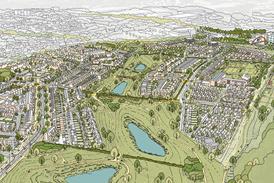
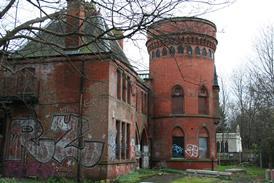
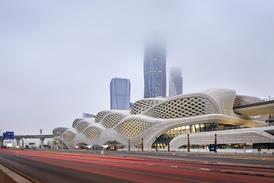
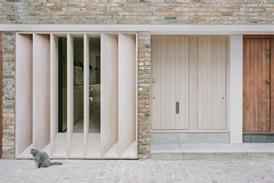



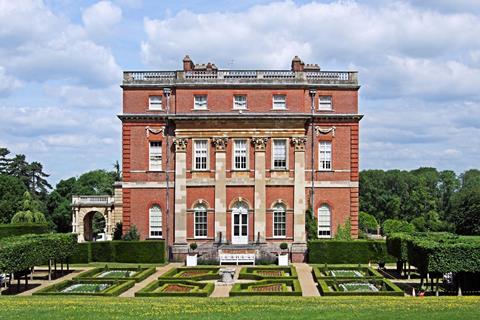
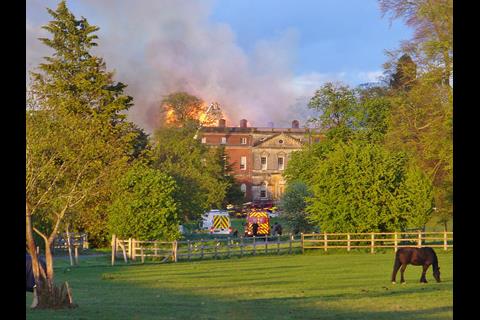
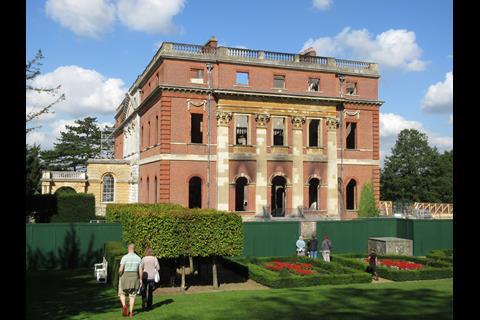







3 Readers' comments